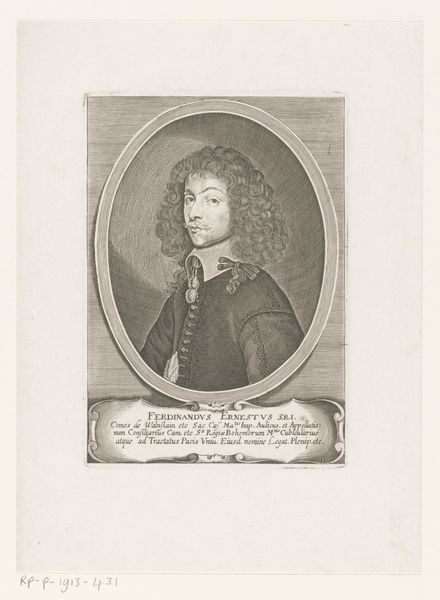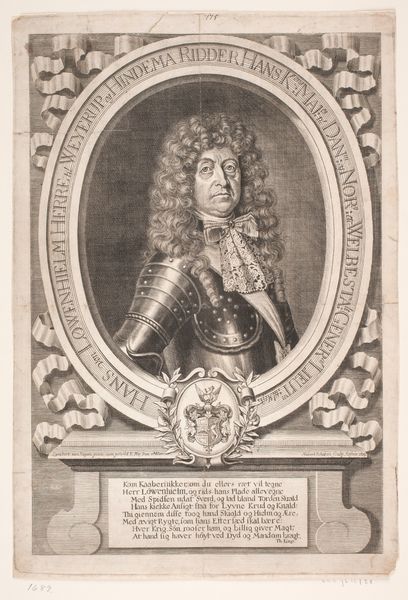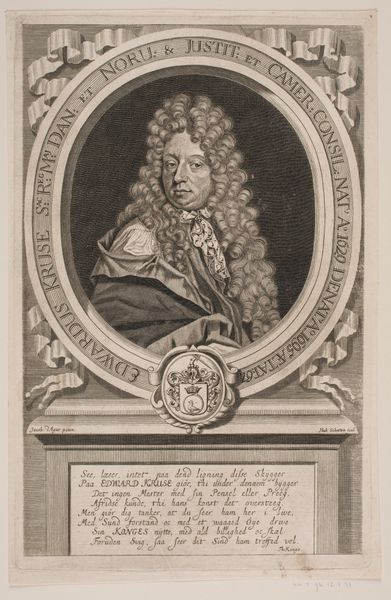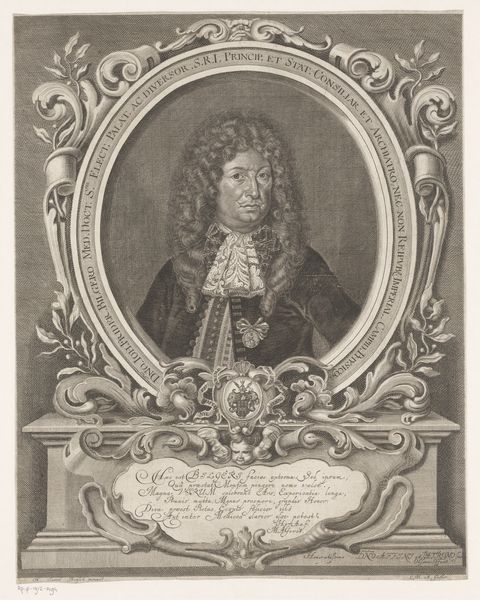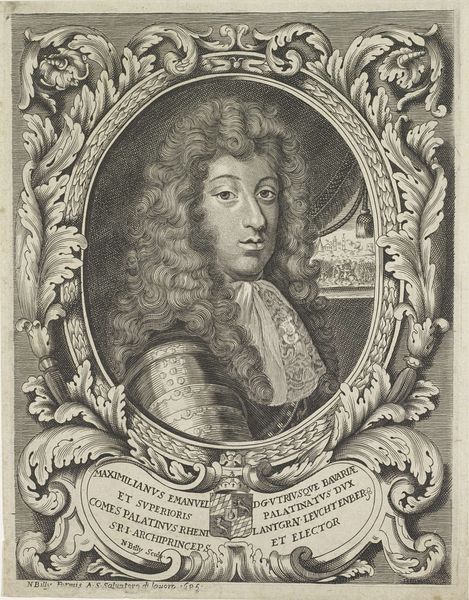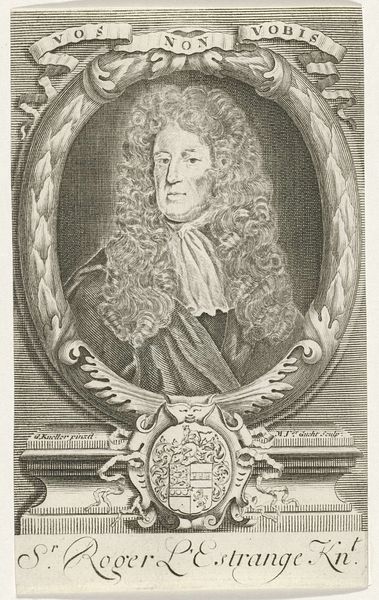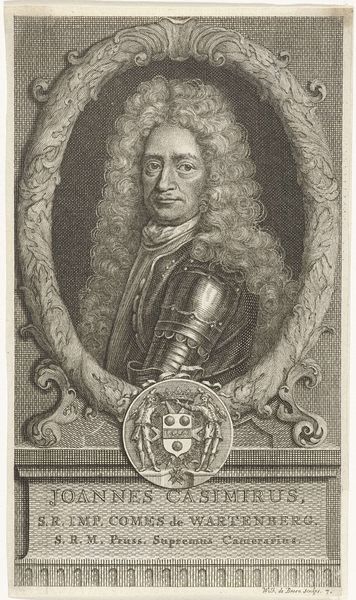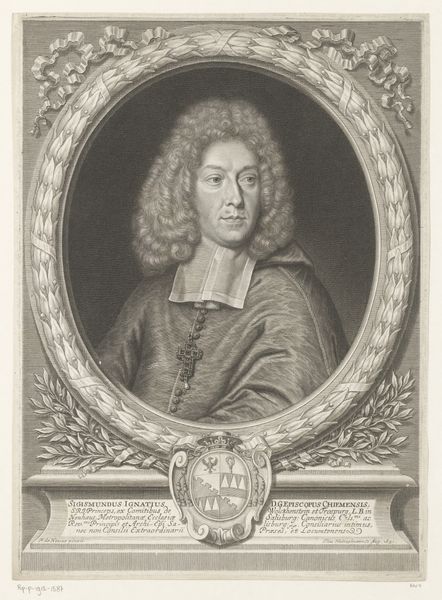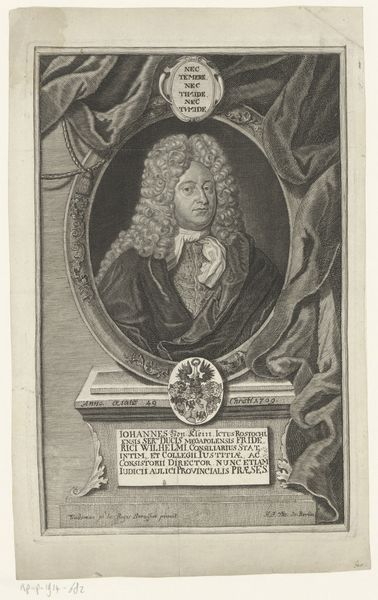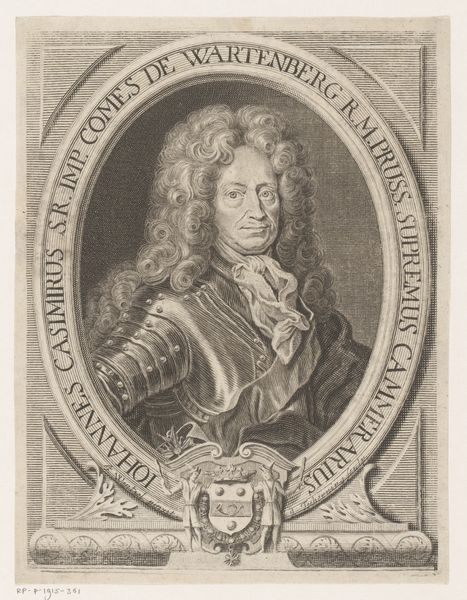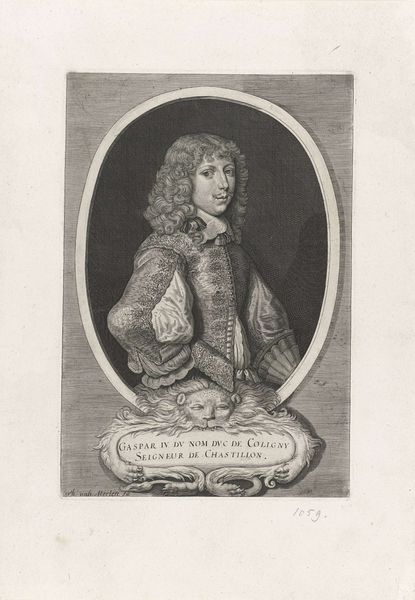
print, engraving
#
portrait
#
baroque
# print
#
history-painting
#
engraving
Dimensions: height 314 mm, width 199 mm
Copyright: Rijks Museum: Open Domain
This print of Ferdinand Ernst, Count of Wallenstein, was made by Pieter de Jode the Younger using engraving, a printmaking technique dating back centuries. The artist would have used a tool called a burin to manually carve lines into a metal plate, likely copper. Consider the tremendous labor involved. Each line that defines Wallenstein's face, his elaborate hair, and the intricate decorative elements was physically etched into the metal by hand. Ink would then be applied to the plate, filling the grooves, and the excess wiped away. Finally, paper was pressed against the plate, transferring the image. Engraving demands precision and control, skills acquired through rigorous training and practice, a craft-based expertise. The resulting print, like this one, could then be reproduced multiple times, making it a valuable tool for disseminating images and information. This portrait speaks to the intersection of artistic skill, labor, and the burgeoning print culture of the 17th century, a time when these reproductive technologies were transforming visual communication.
Comments
No comments
Be the first to comment and join the conversation on the ultimate creative platform.

